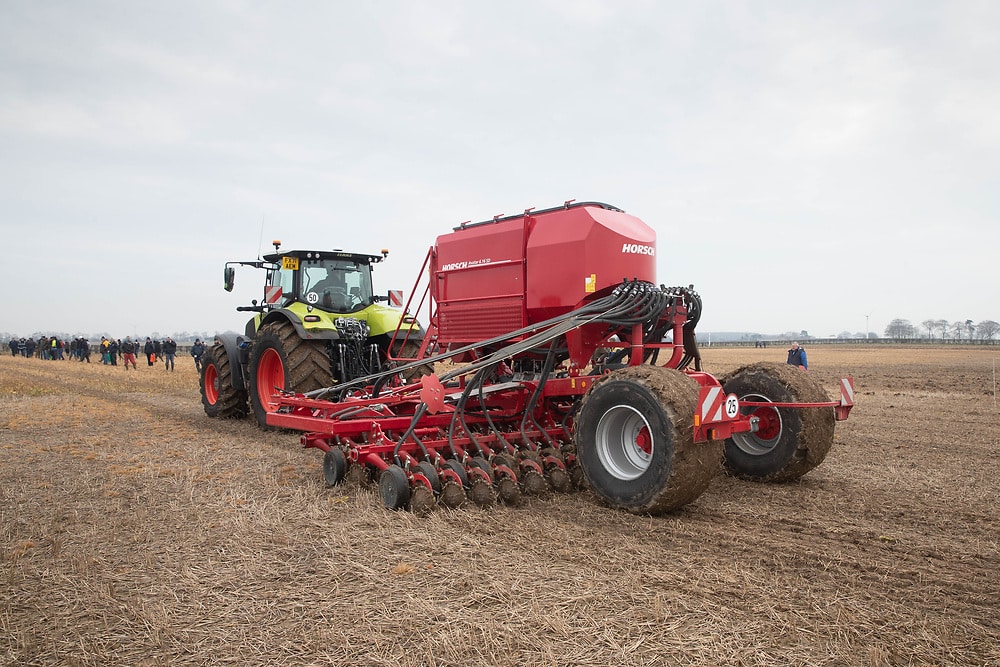Variable-rate seed evens out ranging soils – Agronomist & Arable Farmer
Farmer Rob Timmis has managed to push wheat yields up to 10t/ha and beyond by establishing more consistent crops on his varying Shropshire soils ...
The Timmis family farms around 1,600ha of arable crops. Winter wheat is the main crop at Home Farm, near Newport, along with oilseed rape, spring oats, barley and winter beans.
“The land includes a wide range of soil types, from peat to clay loam, but there can be gravel and sandy and silty loams thrown in as well,” explains Rob Timmis. As a result of the widely varying soil types, Rob was an early adopter of variable-rate drilling, having first started over 10 years ago. Variable drilling leads to a more even crop, resulting in less disease pressure, lower risk of lodging, better use of inputs and higher yields.
Use seed efficiently
“We approached variable-rate drilling with a mindset that it is not about saving seed, but rather ensuring that we are using seed as efficiently as we can, drilling the right amount of seed for the soil in a particular area to get the best establishment possible,” he says. “As we have needed new machinery along the way, we have updated this to incorporate variable-rate capacity. We currently use a 12m Horsch Serto or a 6m Horsch Focus drill.”
Rob is aiming for average establishment rates of about 90%. On heavier clays this can reduce by as much as 60%, but seed rates can be increased accordingly. Equally important is to reduce seed rates on the lusher areas. “We might use a lower establishment rate scenario for a wet
autumn, and different crops might want different establishments too.
“Having an even crop makes decision- making so much simpler, as the correct recommendations are being made for the whole crop, meaning inputs are being applied at the right timing and rate. Historically, we based our variable-rate plans on a limited amount of data, focusing on more traditional methods of soil sampling, which then created zones across fields,” he says.
Even establishment
However, after having the whole farm Terramapped, Rob moved to the Omnia digital farming system. “Variable- rate drilling results in more even crop establishment, leading to more efficient use of chemical treatments, better nitrogen use efficiency and more efficient combine performance. In our own trials, we have found an uplift of 0.6t/ha through variable drilling,” explains Harry Rabbetts, Omnia’s digital services specialist, who has worked closely with Rob.
“Within Omnia it is possible to create maps of various layers of information, which are overlaid to produce much more detailed and accurate seed plans.”
Harry explains all of the data gained from Terramapping on soil type, texture, nutrient content and water-holding capacity has been used to create maps within Omnia. “We have also been able to map patches of weed, such as ryegrass, or even areas of slug damage in a field, which has been very useful. All these layers are overlaid within Omnia, then variety and drilling information is selected and the system generates a variable seed rate for that field or half-field,” Harry says.
“This ability to overlay maps of data means the recommendations created through Omnia are much more closely aligned to the agronomic requirements of the field, so the variable rates are as closely matched to the requirements of that field as possible,” he adds.
Rob says he has found being able to create such bespoke maps, particularly on the heavier land, very valuable, as he has been able to highlight areas with slug issues or germination problems, which are then considered in the higher rate to incorporate these challenges.
